Preparation and application of solid-state upconversion materials based on sodium polyacrylate
- PMID: 35520550
- PMCID: PMC9064687
- DOI: 10.1039/c9ra01027k
Preparation and application of solid-state upconversion materials based on sodium polyacrylate
Abstract
By loading a microemulsion containing both sensitizer and emitter into porous sodium polyacrylate (PAAS), a water-absorbent resin (WAR) upconversion (UC) material was fabricated for photocatalysis applications. This WAR UC material showed a highly efficient UC process in the ambient environment owing to its liquid/solid encapsulation structure. In the application measurement, the UC emission from WAR UC materials can excite the catalyst Pt/WO3 to produce hydroxyl radicals, yielding 7-hydroxycoumarin by reacting with coumarin. In another case, since the band gap of ZnCdS matches the energy of UC emission, hole-electron pairs can be obtained under the UC irradiation and capture electrons from rhodamine B, leading to the degradation of rhodamine B. The maximum of the photocatalysis efficiency can be up to 97%. This work solves the oxygen quenching problem by preparing a triplet-triplet annihilation upconversion (TTA-UC) O/W microemulsion and loading it into PAAS WAR, and opens a new avenue to solid-state devices for TTA-UC. The applications of photocatalytic synthesis and photocatalytic degradation lay a foundation for future practical applications for TTA-UC materials.
This journal is © The Royal Society of Chemistry.
Conflict of interest statement
There are no conflicts to declare.
Figures
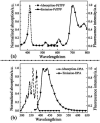
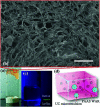
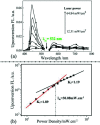
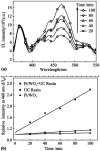
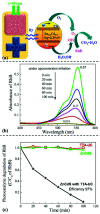
Similar articles
-
Enhancing Triplet-Triplet Annihilation Upconversion: From Molecular Design to Present Applications.Acc Chem Res. 2022 Sep 20;55(18):2604-2615. doi: 10.1021/acs.accounts.2c00307. Epub 2022 Sep 8. Acc Chem Res. 2022. PMID: 36074952
-
Triplet-Triplet Annihilation Upconversion in Broadly Absorbing Layered Film Systems for Sub-Bandgap Photocatalysis.ACS Appl Mater Interfaces. 2019 Apr 10;11(14):13304-13318. doi: 10.1021/acsami.9b01945. Epub 2019 Apr 1. ACS Appl Mater Interfaces. 2019. PMID: 30933469
-
High-efficiency triplet-triplet annihilation upconversion microemulsion with facile preparation and decent air tolerance.Photochem Photobiol Sci. 2024 Jul;23(7):1309-1321. doi: 10.1007/s43630-024-00596-5. Epub 2024 Jun 5. Photochem Photobiol Sci. 2024. PMID: 38839722
-
Recent Advances in the Photoreactions Triggered by Porphyrin-Based Triplet-Triplet Annihilation Upconversion Systems: Molecular Innovations and Nanoarchitectonics.Int J Mol Sci. 2022 Jul 21;23(14):8041. doi: 10.3390/ijms23148041. Int J Mol Sci. 2022. PMID: 35887385 Free PMC article. Review.
-
Nanoengineering Triplet-Triplet Annihilation Upconversion: From Materials to Real-World Applications.ACS Nano. 2023 Feb 28;17(4):3259-3288. doi: 10.1021/acsnano.3c00543. Epub 2023 Feb 17. ACS Nano. 2023. PMID: 36800310 Review.
Cited by
-
A stimuli responsive triplet-triplet annihilation upconversion system and its application as a ratiometric sensor for Fe3+ ions.RSC Adv. 2019 Nov 8;9(62):36410-36415. doi: 10.1039/c9ra06524e. eCollection 2019 Nov 4. RSC Adv. 2019. PMID: 35540611 Free PMC article.
References
-
- Chen S. L. Stehr J. Reddy N. K. Tu C. W. Chen W. M. Buyanova I. A. Appl. Phys. B: Lasers Opt. 2012;108:919. doi: 10.1007/s00340-012-5138-y. - DOI
-
- Dong W. Zhou G. Xu X. Wang X. Liu Z. Yan R. Shao Z. Jiang M. Opt. Laser Technol. 2002;34:55. doi: 10.1016/S0030-3992(02)00092-0. - DOI
-
- Hasan Z. Biyikli L. Sellars M. J. Khodaparast G. A. Richardson F. S. Quagliano J. R. Phys. Rev. B: Condens. Matter Mater. Phys. 1997;56:4518. doi: 10.1103/PhysRevB.56.4518. - DOI
-
- Bao W. Sun B. Wang X. Ye C. Ping D. Liang Z. Chen Z. Tao X. Wu L. J. Phys. Chem. C. 2014;118:1417. doi: 10.1021/jp410984c. - DOI
LinkOut - more resources
Full Text Sources
Miscellaneous

